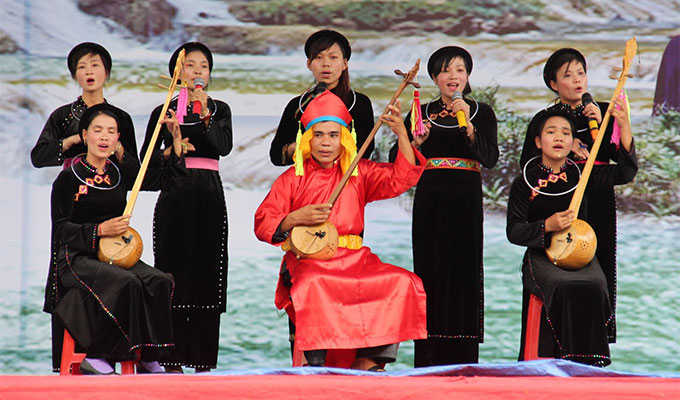"Hat Then" or the Then singing of the Tay and Nung ethnic groups in Lang Giang, Yen The, Luc Ngan, Luc Nam and Son Dong districts has been recognized as the national intangible heritage.

"Then" singing is a traditional kind of oratorio art in Viet Nam. That form of art performance originated form religious activities of Tai, Tay and Nung ethnic groups in Northern Viet Nam. The name "Then" is a word in the language of Tay ethnic group and means "god" in English. That name comes from religious liturgies of ethnic people to worship the god and pray for their life.
“Then” singing is combination of singing, music and dance. It’s usually performed by a group of vocalists who can be males or females. They sing “then” melodies at traditional liturgies of celebrating a new house, weddings, longevity parties, Long Tong Festival, etc; as well as religious rites of praying for health, harvest, funerals, etc.
“Then” singing is a musical genre that uses a handmade gourd lute called a “Tinh Tau” or “Dan Tinh”. “Tinh” means a musical instrument and “Tau” is a type of gourd. Its three cords represent the tongues of the father, the mother, and the heaven and earth.
“Then” is performed at rituals to ask for good health, bumper crops, and good fortune to bless a new home, and at maturity rituals. Today, “Then” singing is also considered an art form and is performed at festivals and social gatherings.
With the recognition of the Then singing, Bac Giang province now has 11 items recognized as the national intangible cultural heritage.
The Then singing is an important religious, ceremonial and cultural practice of the Tay and the Nung minority ethnic groups which demonstrate their spiritual and cultural life.
At present, only 31 artisans are maintaining the traditional form of Then singing.